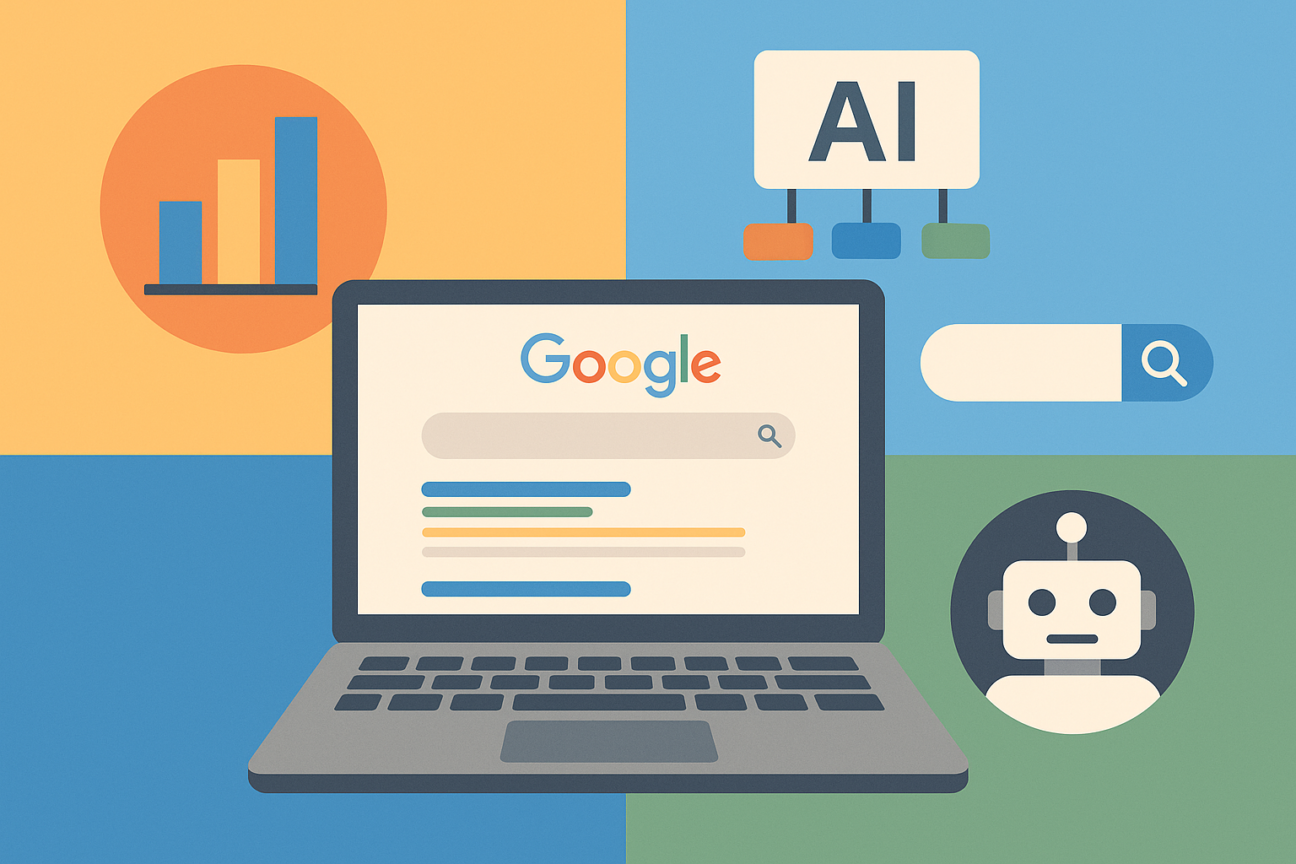
Google has just launched AI Max, a new feature that uses artificial intelligence to make Search ads smarter. It promises more clicks, better performance and clever tools that adjust your ads automatically. Sounds exciting, right?
However, if you don’t plan carefully, it can also lead to confusion, wasted budget or the wrong kind of clicks.
What do you need to know about Google AI Max?
AI Max helps you reach more people, even ones you didn’t think to target
This tool looks beyond your existing keywords and figures out other search terms that might be relevant. It uses your website, your current ads and even your URL to guess what else your potential customers might type into Google. That means more visibility but also more variety in who sees your ad.
That variety can be a problem if you’re not ready for it
Google won’t just send people who are ready to buy. It will also send people doing early research, comparing options or who are just curious. If your ad takes everyone to the same landing page (especially your homepage) they might get lost or bounce.
Ideally, you’d have different landing pages for different stages of the buyer journey. One for people just learning, one for people comparing and one for people who are ready to say ‘yes’. Each one should be clear, have the right information and include a strong call to action.
The ad text might be written by AI but it still needs your voice
AI Max can create headlines and descriptions using your website and existing ads. But it’s worth remembering that it can only use what you’ve already given it.
If your website doesn’t explain your business clearly, or if you haven’t uploaded great ad assets, it may miss your unique selling points. If your USPs or benefits are subtle or specific, make sure they’re written out clearly in your content and ads so the AI can pick them up and use them well.
It’s also worth thinking beyond Search
Search ads are great at catching demand but where does that demand come from? Often, we seen clients get a big bump in inbound search traffic simply by running small awareness campaigns on platforms like Meta or LinkedIn. These don’t need huge budgets. Even a modest display ad campaign can boost brand recall and make your search ads more effective. If you’re only using one channel, you might be missing a trick.
Yes, the reports are better, but you still need to look at the right things
AI Max comes with improved reporting. You’ll be able to see which search terms are working, which platforms your ads are showing on and how each asset performs. But even with better data, it’s important to ask: are these the right visitors? Are they converting? Are they staying on your site? The more clearly you define success, the more useful your reports become.
In short, AI Max is a powerful tool, but tools need plans
It’s easy to switch AI Max on and hope for the best. But the best results come when AI is used as part of a smart, well-thought-out campaign. That means clear objectives, good content, landing pages that work and the right message in the right place. Use AI Max to make your ads work harder, but make sure you’re working smarter too.
It’s also worth thinking about why Google is rolling out tools like this. Ad spend is still growing rapidly, and search and social made up half of all advertising spend in the UK last year (Source: The Times). But Google wants more.
To keep growing, they need more advertisers using their platform and they need each of them to spend more. AI and automation help with both. But something has to give. And it won’t be Google’s bottom line.
Need some help with your digital ad strategy?
Get in touch with our digital marketing experts via the form below.